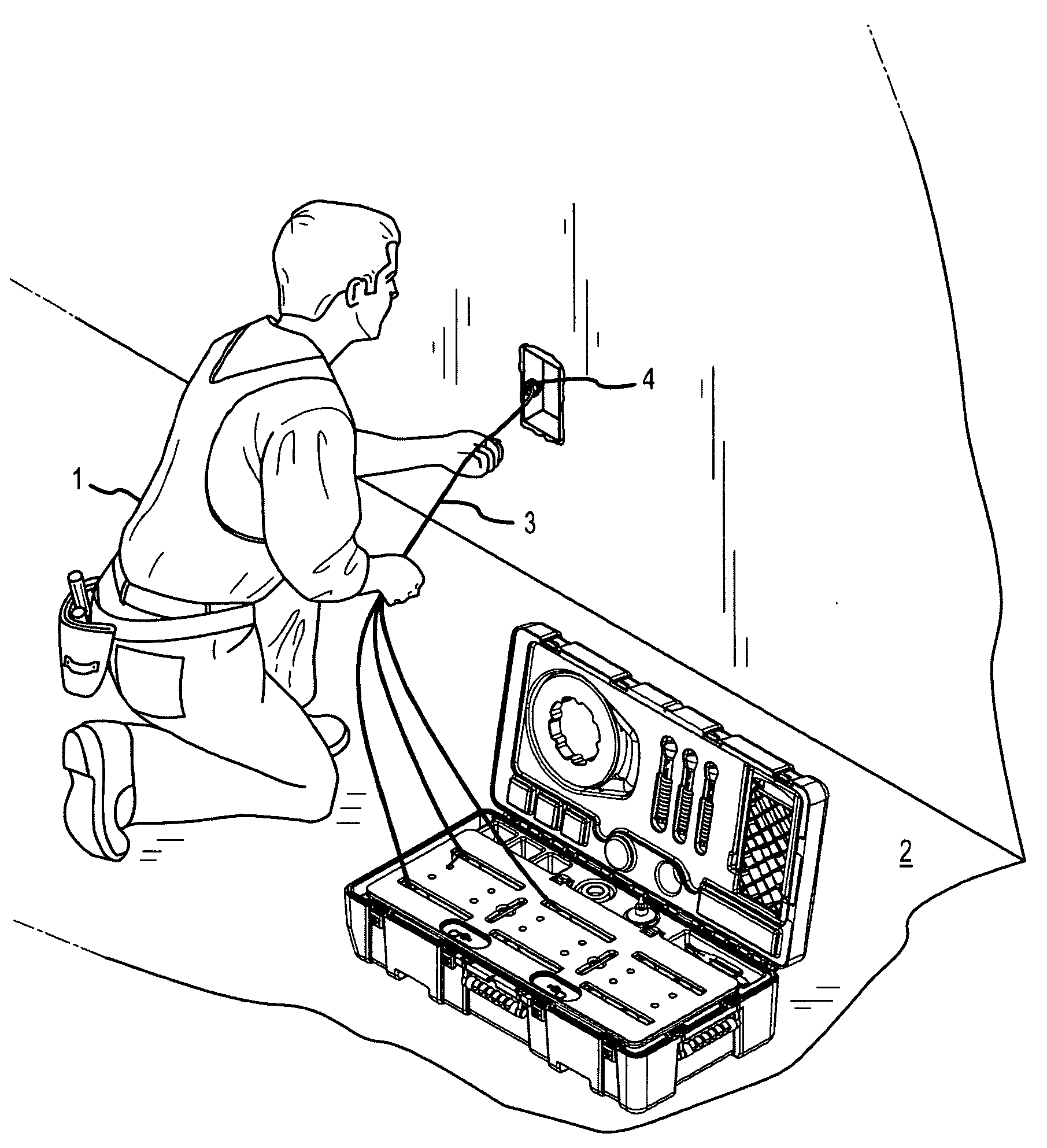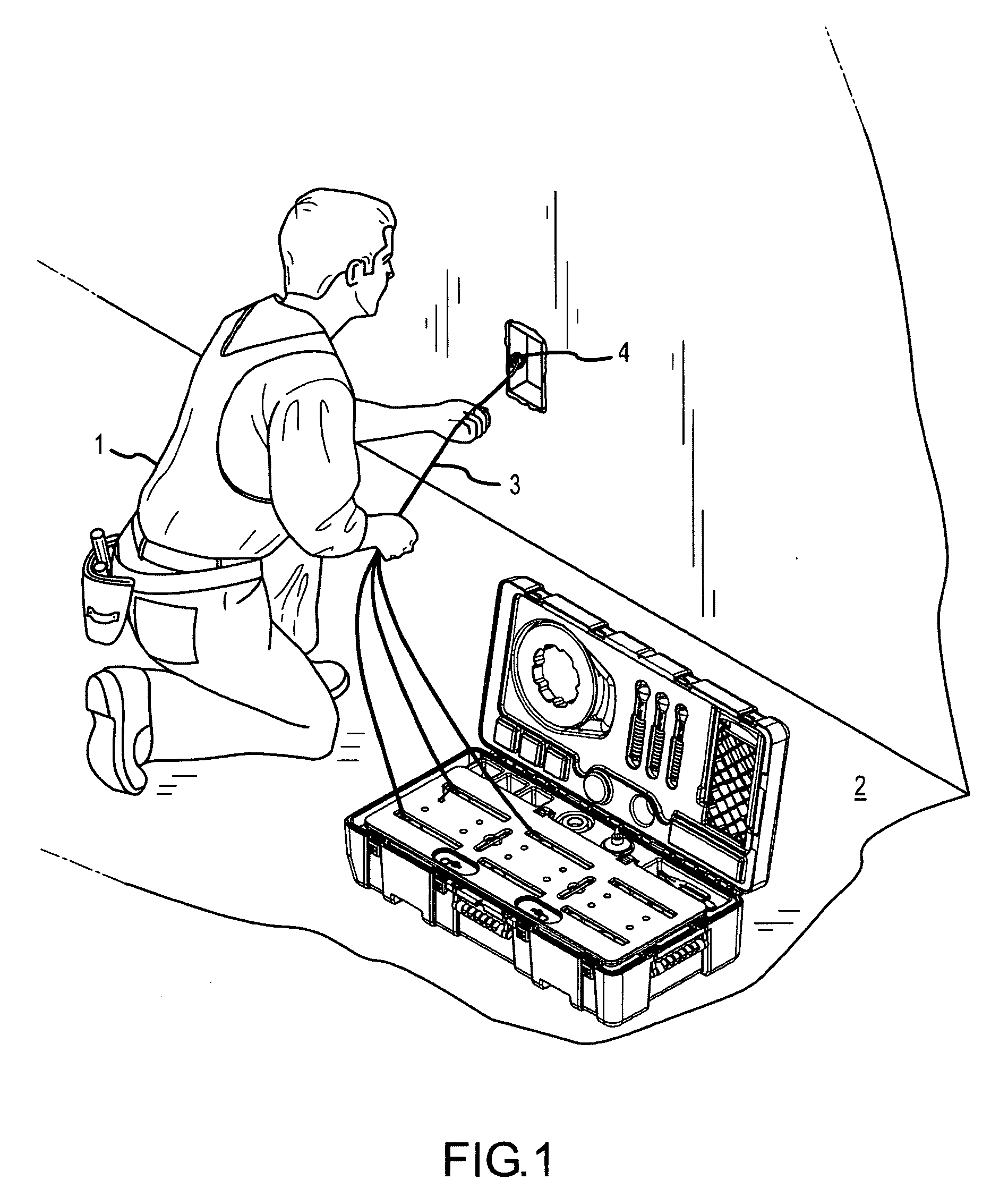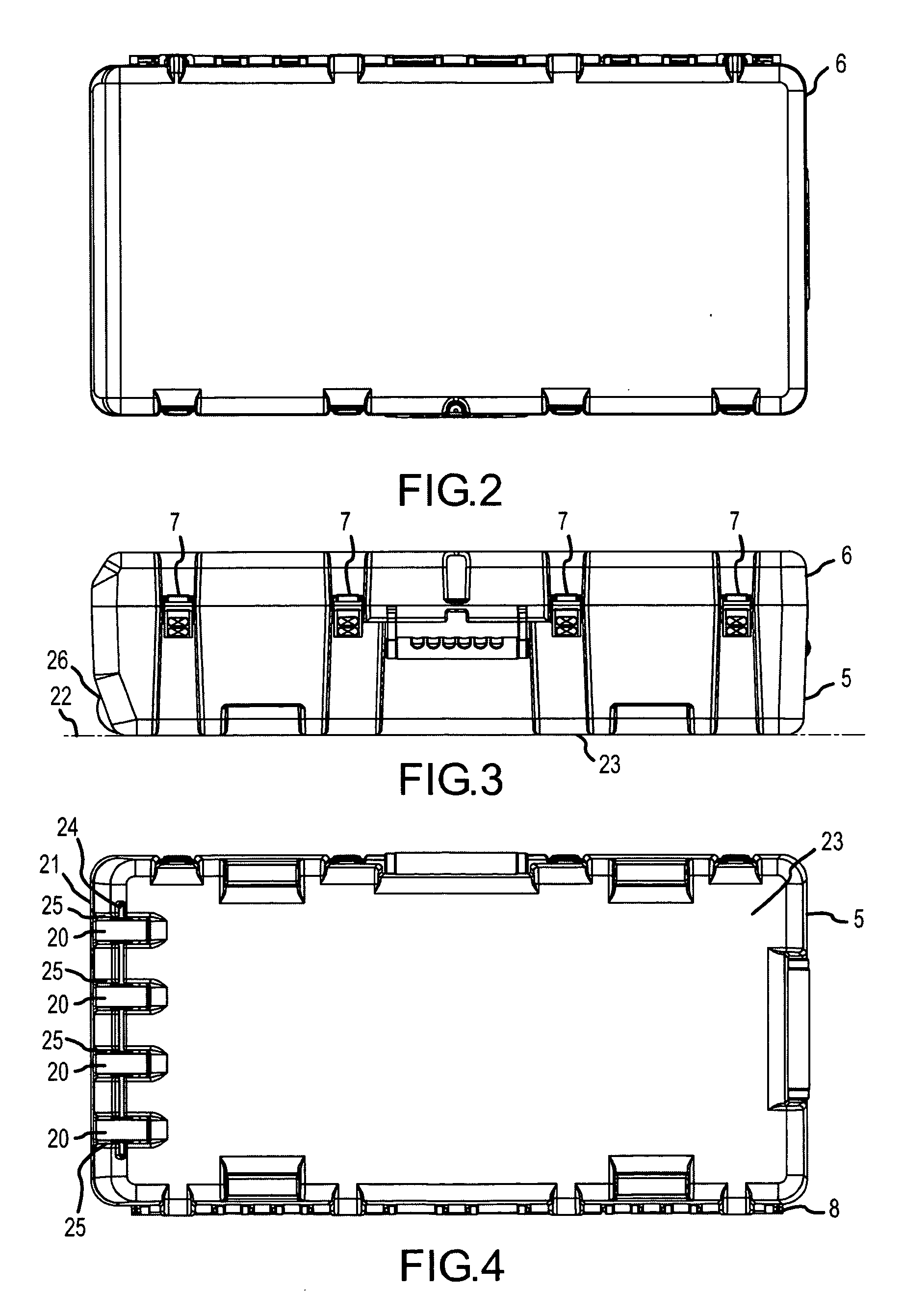Electrician's caddy
a technology for electricians and caddy, which is applied in the direction of cables, transportation and packaging, and devices for laying cables, etc., can solve the problems of lack of portability, unresolved problems, and many of the conventional devices which dispense wires from spools lack wheels
- Summary
- Abstract
- Description
- Claims
- Application Information
AI Technical Summary
Benefits of technology
Problems solved by technology
Method used
Image
Examples
Embodiment Construction
[0048] Referring primarily to FIG. 1, provides an illustration of a person (1) using an embodiment of the electrician's caddy (2) invention to establish one or a plurality of wire(s) (3) inside of a conduit (4). As to certain applications, the person (1) can first feed a fish tape through the interior passage of the conduit (4) to provide a fish tape end to which one wire or the plurality of wires (3) dispensed by the electrician's caddy (2) can be attached. The fish tape can then be drawn with the wire or plurality of wires (3) through the interior passage of the conduit (4) to establish the wire or a plurality of wires (3) inside the interior passage of the conduit (4).
[0049] The term “person” as used herein generically encompasses a single person, a pair of people, or a plurality of people which individually or in combination can use the electrician's wire caddy (2) invention as described herein.
[0050] The term “wire” as used herein generically encompasses the numerous and vari...
PUM
| Property | Measurement | Unit |
|---|---|---|
| angle | aaaaa | aaaaa |
| angle | aaaaa | aaaaa |
| angle | aaaaa | aaaaa |
Abstract
Description
Claims
Application Information
 Login to View More
Login to View More - R&D
- Intellectual Property
- Life Sciences
- Materials
- Tech Scout
- Unparalleled Data Quality
- Higher Quality Content
- 60% Fewer Hallucinations
Browse by: Latest US Patents, China's latest patents, Technical Efficacy Thesaurus, Application Domain, Technology Topic, Popular Technical Reports.
© 2025 PatSnap. All rights reserved.Legal|Privacy policy|Modern Slavery Act Transparency Statement|Sitemap|About US| Contact US: help@patsnap.com



